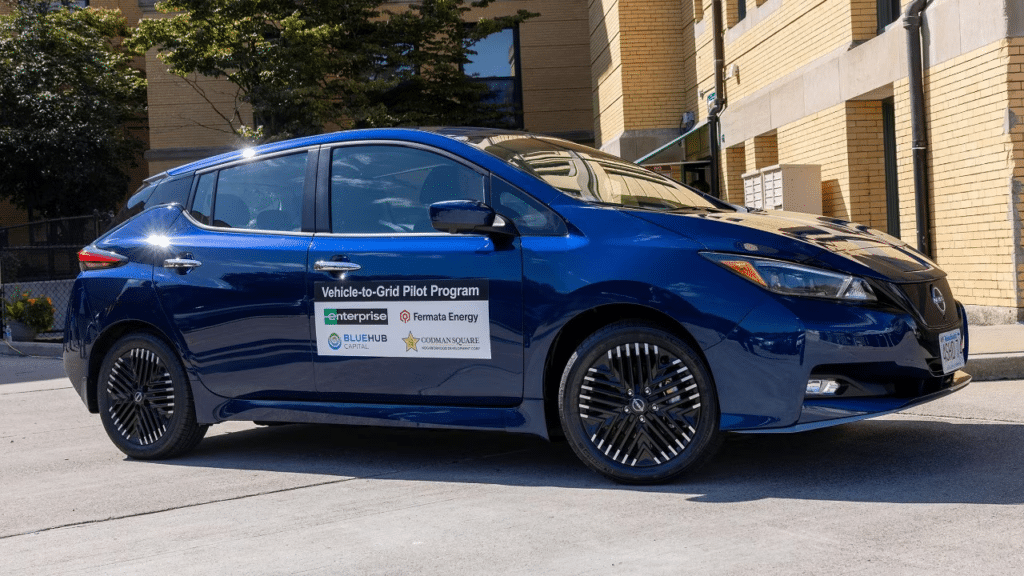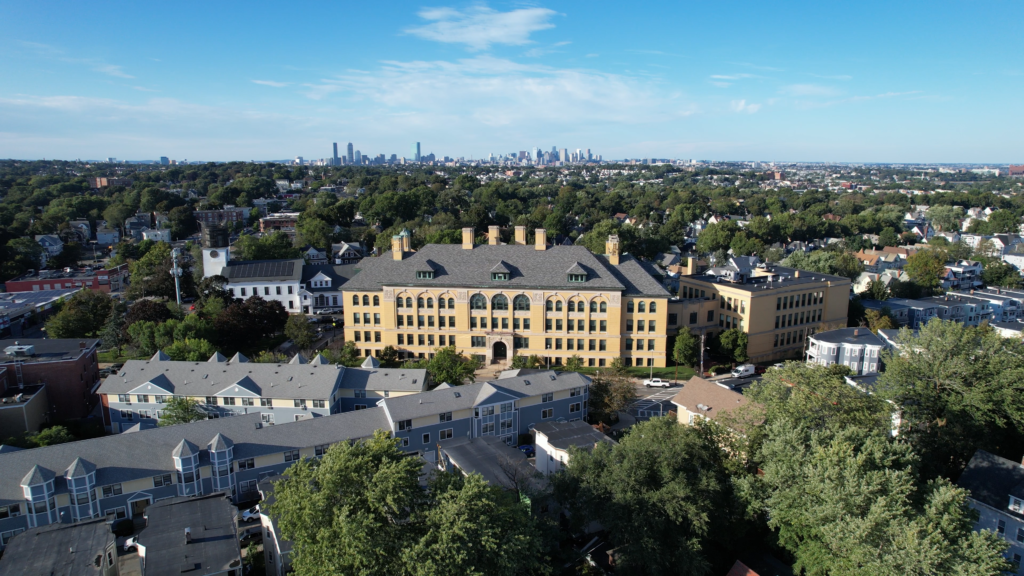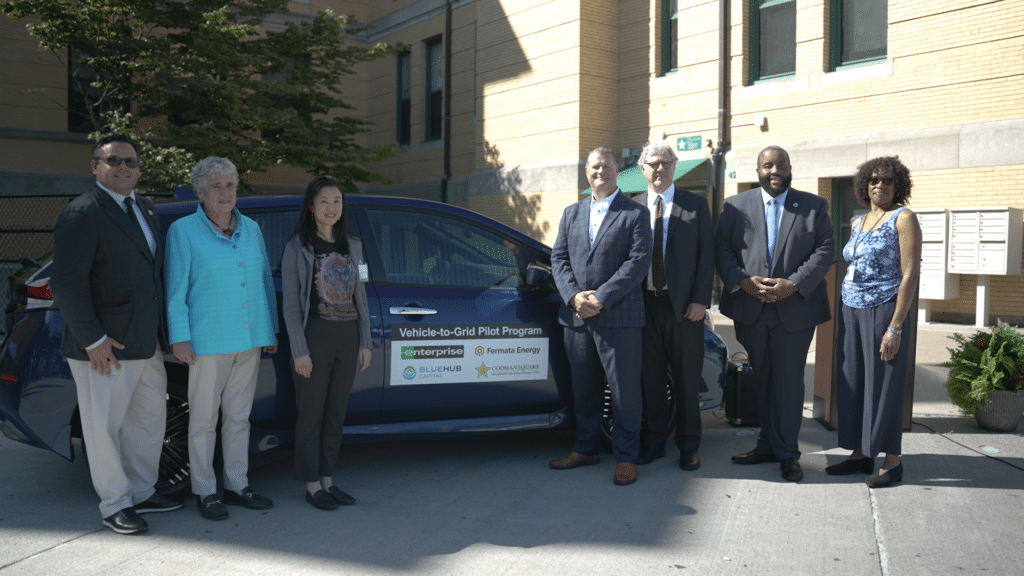Fermata Energy Announces Affordable Access V2G Pilot
BlueHub Energy, a division of the national nonprofit community development financing group known as BlueHub Capital, and Fermata Energy, the premier provider of vehicle-to-grid (V2G) services in the United States, have recently announced the inauguration of the first V2G trial program for multi-family affordable housing in the nation. This innovative program aims to enhance the affordable accessibility of electric vehicles (EVs) for drivers from low-income brackets. This pioneering initiative was propelled into action in collaboration with Enterprise Holdings, a reputable provider of mobility solutions that oversees the Enterprise, National, and Alamo car rental brands, along with Codman Square Neighborhood Development Corp. (CSNDC), a grassroots community organization deeply vested in the development of affordable housing and championing racial and economic justice in Boston, Massachusetts.

Nissan Leaf will provide power to affordable housing complex when needed
In an exciting development, the new pilot program pairs V2G bidirectional charging with the Nissan Leaf EV, demonstrating an innovative approach to harnessing energy when it is needed. This unique setup allows the EV’s battery to serve as an alternative energy source for CSNDC’s Girls Latin Apartments, an affordable housing complex located in Dorchester, Massachusetts. This game-changing initiative will empower Kelvyn Lopez, a resident of the apartment complex, to access the vehicle on a month-to-month basis at a significantly reduced rental cost. This initiative not only represents a leap towards achieving energy sustainability but also enhances mobility for residents in a cost-effective manner.

As part of the pilot program, Lopez enjoys the liberty to use the car freely, with the exception of certain times during the summer months. During peak power demand periods, particularly on sweltering afternoons when the cooling systems of the building are in high use, the car must be connected to the charger. This limitation ensures that the vehicle’s battery is leveraged as an alternative energy source, contributing to the building’s power needs and promoting energy efficiency. This approach embodies the core objective of the V2G program – fostering a symbiotic relationship between mobility and sustainability.
“Communities like mine are being left behind in the transition to electric vehicles in so many ways,” said Kelvyn Lopez, the driver participating in the new pilot program. “At the same time, we’re burdened the most by pollution, the price of gas and the rising costs of living in Boston. I’ve watched the cost to fill up my tank nearly double in the past few years. I wanted to get an electric vehicle but there was nowhere to charge it overnight near my apartment in Dorchester. I am really excited about this opportunity to bring EV charging to my neighborhood and to share what we learn with the community.”
Pilot drives EV adoption for environmental justice communities
The overarching aim of the pilot is to stimulate the adoption of Electric Vehicles (EVs) within environmental justice communities. This is achieved by drastically reducing the costs associated with owning an EV for the driver and completely eliminating the expenses linked to hosting charging infrastructure for affordable housing developments. This innovative approach ensures that the benefits of electric vehicles are accessible to all sectors of society.
At the same time, this initiative presents a viable economic model. The V2G pilot earns an approximate yearly income of $3,000 from Eversource, a local utility company, through its Connected Solutions Demand Response program. This revenue generation plays a crucial role in offsetting operational costs and making this initiative a sustainable one.
In the quest to identify the most efficient ways to scale the pilot, BlueHub, Enterprise, and Fermata Energy have taken the lead in subsidizing the cost of the EV. By absorbing some of the expenses, these organizations are fostering a conducive environment for the pilot’s expansion and success. This collaborative effort is a testament to how through strategic partnerships and innovative thinking, we can accelerate our journey towards a sustainable future.
As cities and states take steps towards a cleaner and greener future, we must place equity at the center,” said BlueHub Capital CEO Elyse Cherry. “Too often, the communities that stand to benefit most from environmentally conscious policies are left out. Our new pilot program will bring low-income communities into the electric vehicle transition.”
Massachusetts has ambitious clean transportation and green energy goals
Massachusetts, along with six other states including California and New York, has set an ambitious agenda to end the sale of new gas-powered vehicles by 2035. This commitment forms a part of Massachusetts’ clean energy and climate plan which lays out a roadmap to drastically decrease transportation emissions by 86% from the 1990 levels by 2050. To achieve this, one of the key action steps is the goal of having over one million electric vehicles on the road by 2030.
BlueHub Energy’s pilot plays a pivotal role in this transition. It ensures that environmental justice communities are not left behind in the clean energy transition. As states across the US ramp up efforts to reduce greenhouse gas emissions and combat climate change, ambitious EV goals are emerging. BlueHub Energy’s pilot is a beacon of sustainability and inclusivity, demonstrating the potential for strategic partnerships and innovative thinking in accelerating our journey towards a sustainable future.
“The transition to electric vehicles has largely bypassed low-income communities thus far, many of which are more likely to experience the negative effects of climate change,” said DeWitt Jones, President of BlueHub Energy. “Our goal is for communities with lower incomes to be early participants in the adoption of electric vehicles by employing a scalable model to tap utility savings to lower the costs of an EV and reduce regional emissions and local pollution. Pilot programs like the one we’ve formed with Fermata Energy, Enterprise and CSNDC have never been more urgently needed to equitably tackle the climate crisis at hand.”
Gail Latimore, Executive Director of CSNDC, agreed to host the new pilot because she sees the positive impact on local residents. “This is consistent with our longstanding work in environmental justice, ensuring that our communities don’t get left behind,” said Latimore.
“Every community, in every state, deserves access to electric vehicles. The integration of vehicle-to-grid technology reduces the operational costs of EV ownership and bolsters our grid with a higher infusion of renewable energy. At Fermata Energy, we’re deeply honored to be a part of a pioneering collaboration that will set the precedent for making EV adoption affordable and widespread across the US,” said Tony Posawatz, CEO of Fermata Energy.
Fermata Energy plays a pivotal role with its Vehicle-to-Grid (V2G) bidirectional charging platform
Fermata Energy’s Vehicle-to-Grid (V2G) bidirectional charging platform is a key player in this transformative journey. It meticulously manages the EV’s state of charge, ensuring both the charging and discharging of the EV battery. The company employs a sophisticated cloud-based, AI-driven software platform that analyzes a vast number of rapidly changing data points, including weather conditions and utility data. This enables the identification of optimal times when an EV can earn revenue by dispatching some of the energy stored in the EV’s battery back to the grid or a building.
During periods of heightened demand—such as on sweltering summer afternoons when cooling systems are running at full capacity—utilities often require additional energy. These critical moments, known as “earning opportunities,” present a unique chance for EVs to contribute their stored energy back to the grid. Eversource, a prominent utility company, compensates EV fleet and car owners equipped with V2G bidirectional chargers for sending energy back to the grid during those times when electricity demand peaks. This innovative approach not only optimizes energy usage but also benefits EV owners, effectively making the transition to clean energy a win-win situation.
“Delivering an outstanding customer experience drives our electrification strategy. It’s not just about adding EVs into our fleet. It’s about looking long-term at infrastructure and expanding power and charging viability to support an equitable and inclusive electric future,” said Chris Haffenreffer, Vice President of Strategy Development for Enterprise Holdings. “Collaborating with Fermata Energy and BlueHub to bring this pilot to life and explore the viability of V2G charging in a low-income area aligns perfectly with our electrification efforts. It’s an amazing opportunity for the broader community, and it will provide valuable information for future infrastructure planning.”
BlueHub Energy’s role in the innovative V2G pilot project
BlueHub Energy’s newest initiative is the V2G pilot project. This project, primarily aimed at enhancing access to clean energy in low-income communities, creatively leverages diverse financing models. A significant part of BlueHub’s participation in this pilot program is possible due to a generous grant from the Opportunity Finance Network. This funding source, known for its commitment to delivering responsible, affordable lending to help low-income, low-wealth, and other disadvantaged people and communities join the economic mainstream, aligns perfectly with BlueHub’s goal of making clean energy accessible to everyone. The strategic collaboration between these entities demonstrates the power of innovative thinking and partnerships in moving towards a more sustainable future.

V2G is a new technology providing grid stability
V2G is an important part of the role EVs will play in the future to provide greater electric grid stability in periods of peak demand. Experts around the globe are concerned about how the electric grids will handle all of the additional electricity needed to power the large amount of EVs arriving on the market, which is growing exponentially each year. By utilizing V2G, smart charging and other solutions, the electric grid will have greater stability not only for large amounts of EVs charging at the same time, but other peak demand issues such as heatwaves, addressed by the Fermata Energy and BlueHub Energy pilot.

Electric Vehicle Marketing Consultant, Writer and Editor. Publisher EVinfo.net.
Portfolio: BillPierce.net
